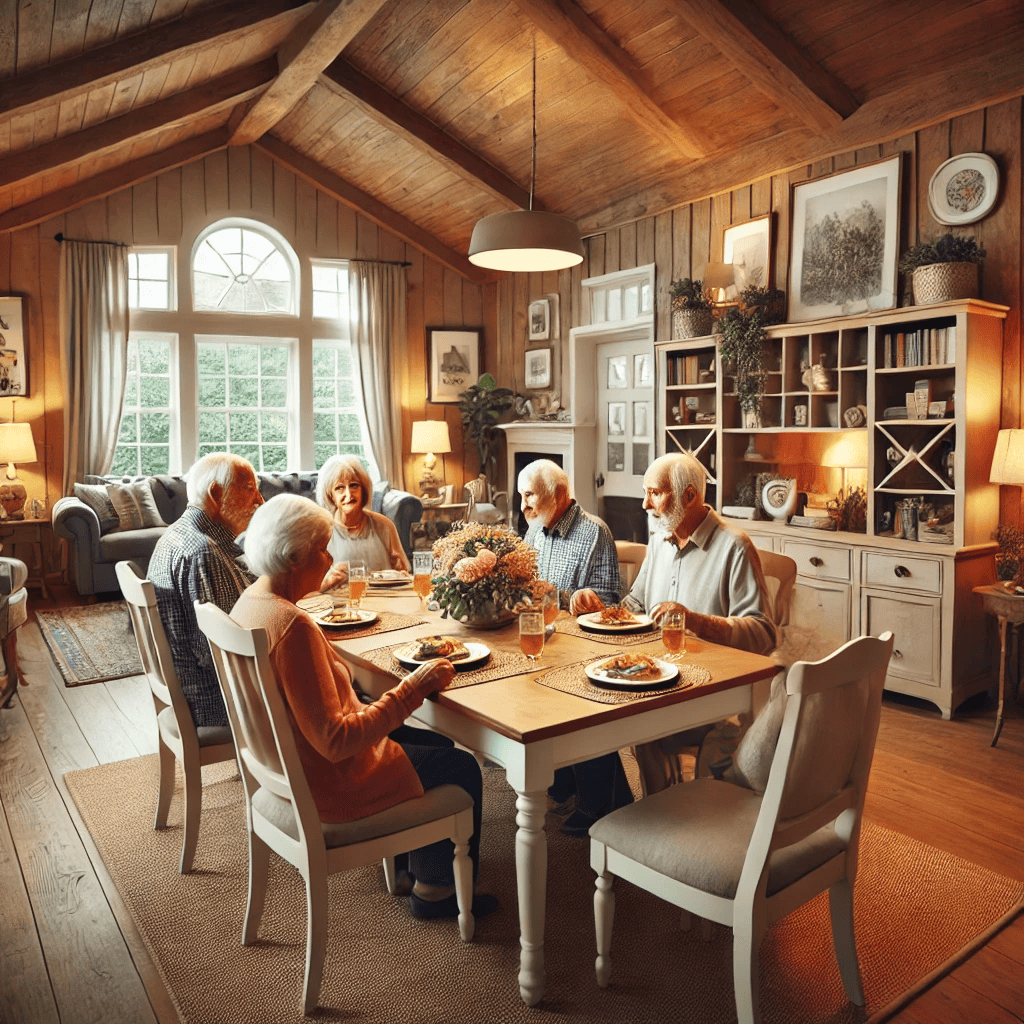In the world of senior living, one size certainly does not fit all. The traditional big-box facilities, often housing hundreds of residents, have long been the norm. But as society evolves, so do our expectations of what “home” should feel like. 🏡 Enter the 10-20 bed homes — intimate, boutique-style residences that are redefining senior care. Here’s why smaller is not just better, but the future of senior living.
1. Personalized Care and Attention
In a smaller home setting, caregivers have the bandwidth to focus on the individual needs of each resident. With fewer residents to attend to, caregivers can provide:
- Higher quality interactions: Knowing residents on a personal level enables tailored care plans. ✨
- Proactive health monitoring: Early detection of issues becomes more feasible in a close-knit environment. ⚕️
According to industry studies, seniors in smaller homes report higher satisfaction rates and better overall health outcomes compared to those in larger facilities. 😄
2. A True Sense of Community
Imagine living in a house where everyone knows your name, and shared meals feel like family dinners. 🍳 That’s the essence of 10-20 bed homes. This model fosters:
- Deep connections: Residents form genuine bonds with their peers and staff. 🤝
- Reduced isolation: Smaller groups combat loneliness, a major issue in traditional senior living facilities. 👪
This intimate setup mirrors the comforting dynamics of a family home, enhancing emotional well-being. 💞
3. Enhanced Safety and Hygiene
Smaller homes naturally lend themselves to higher cleanliness standards and better safety protocols:
- Simplified maintenance: With fewer rooms and residents, it’s easier to maintain hygienic conditions. ♻️
- Lower infection risk: Fewer people under one roof mean reduced chances of widespread illnesses. 🦠
During the COVID-19 pandemic, boutique-style homes were notably better equipped to implement effective isolation and sanitation measures. 🌧️
4. A More Affordable Model
While the initial perception may be that smaller homes are more expensive, the opposite can often be true:
- Efficient resource allocation: Smaller homes require less operational overhead compared to sprawling facilities. 💵
- Fewer unnecessary services: Residents only pay for what they need, not one-size-fits-all amenities. 💡
This targeted approach makes quality care accessible to more families. ❤️
5. A Home-Like Atmosphere
Perhaps the most compelling reason is the sense of home these residences provide. The warm, inviting ambiance of a 10-20 bed home contrasts sharply with the often-sterile environment of large facilities. Features like cozy living rooms, shared kitchens, and outdoor spaces create:
- A calming environment: Residents feel relaxed and comfortable, much like in their own homes. 🏡
- Easier transitions: Moving into a senior living community feels less daunting. 🙂
Why This Model Matters Now
The senior population is growing rapidly, with over 70% of Americans expected to require assisted living or memory care in their lifetime. 👴👵 Traditional facilities are struggling to meet demand while maintaining quality. Smaller homes offer a scalable solution that prioritizes dignity, comfort, and care. 💖
At Shepherd Premier Senior Living, we’ve built our vision around this belief. Our 10-20 bed homes provide four times the personalized care compared to traditional models, ensuring that residents truly feel at home. 🏡
The Future of Senior Living
As we look ahead, it’s clear that smaller is indeed better. Boutique-style homes are not just a trend; they’re a necessary shift towards compassionate, human-centered care. They represent the promise of a brighter, more dignified future for our seniors. 🌟
So, when considering options for yourself or a loved one, ask this question: Does this feel like home? If the answer isn’t an emphatic yes, it’s time to think smaller. 👌
Ready to experience the difference of boutique senior living? Learn more about Shepherd Premier Senior Living and our commitment to redefining care for our seniors. 🙏


